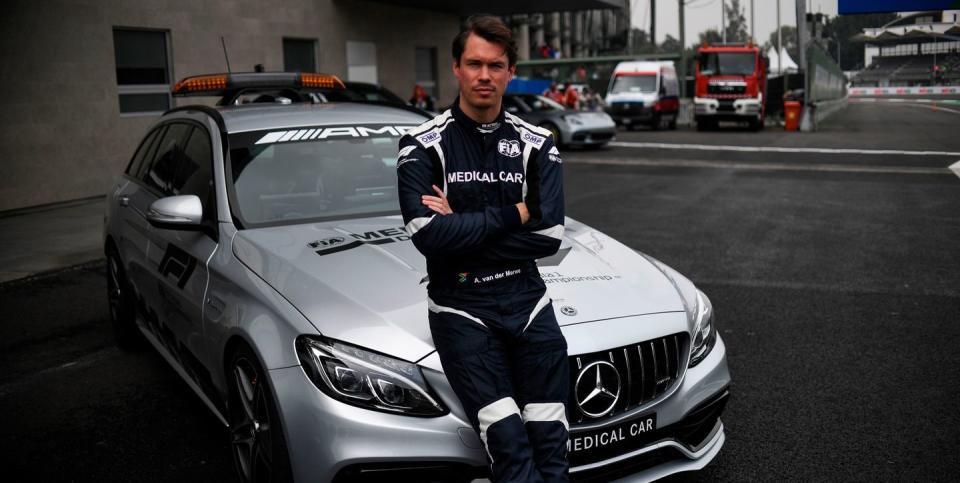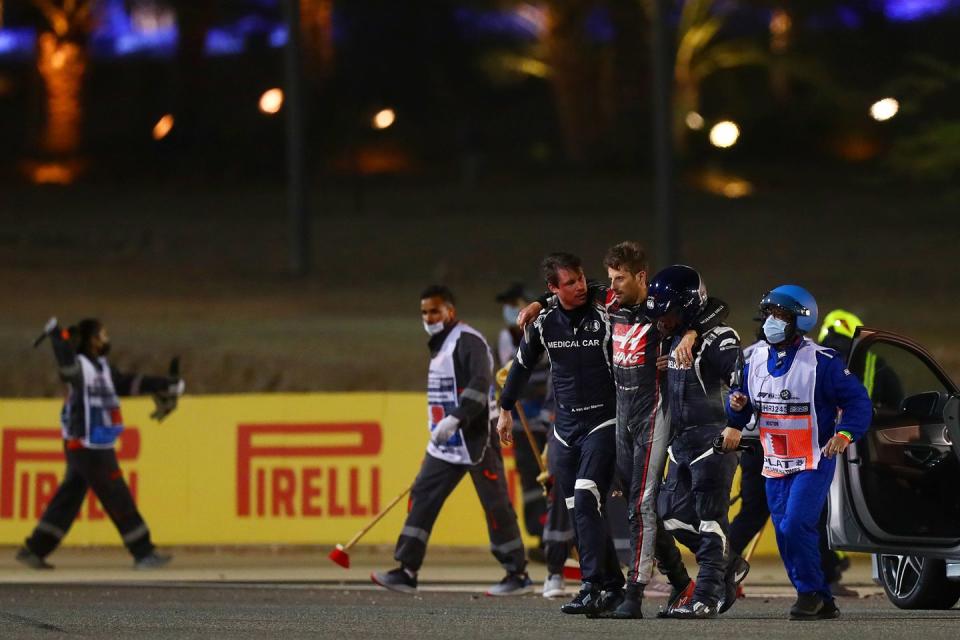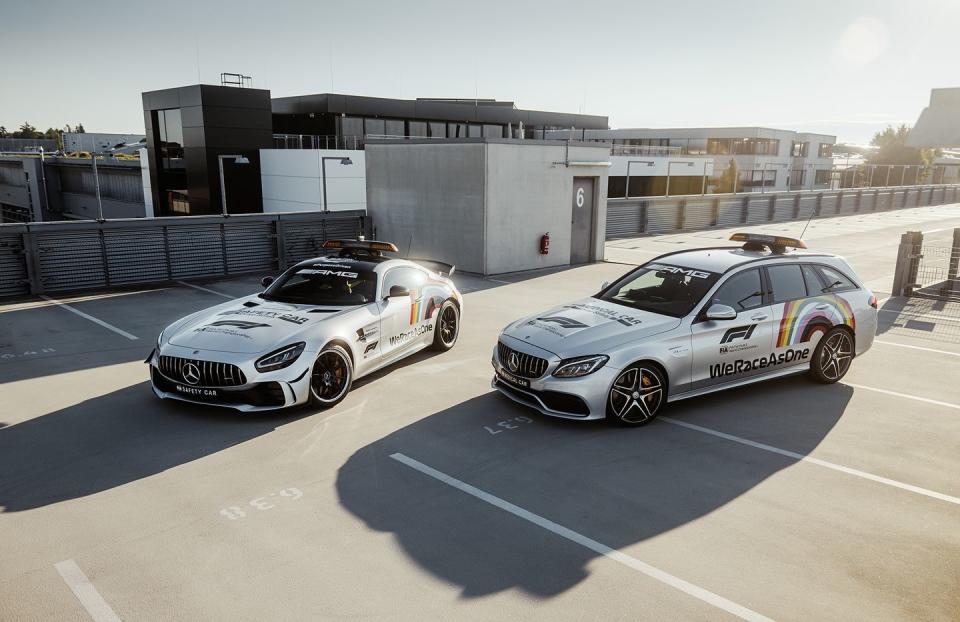Meet F1's Ambulance Driver, Who Got to Grosjean's Crash in Just 10 Seconds

At first, a halo saved Romain Grosjean's life. Angels arrived in thunder soon afterward. Formula 1's Medical Car, a Mercedes-AMG C63 S wagon, was dispatched by race command and arrived on scene in roughly 10 seconds. At the wheel was Alan van der Merwe, former British F3 champion. Riding shotgun was Formula 1 Rescue Coordinator Dr. Ian Roberts, a veteran of helicopter emergency teams. As the flames billowed, the men moved forward without hesitation. They pulled Grosjean from the fire.
"On Mondays I normally wake up and I'm just a bit tired," Van der Merwe told Road & Track from Bahrain. "I woke up this Monday and I've never been so happy after a Grand Prix. It just feels incredible that that all just worked well, and Romain got out of there alive."

Born in South Africa, Van der Merwe has been driving the F1 Medical Car for the past 12 years. Beyond winning the 2003 British Formula 3 championship, he has driven in Formula 3000, and was a test driver for the BAR-Honda F1 team. At the Bonneville Salt Flats, in November of 2005, he drove the BAR-Honda 007 to a top speed of 257 mph.
He is clearly an accomplished and skilled racing driver. However, for more than a decade, Van der Merwe has been on your screens as the driver of the world's fastest ambulance.
The first F1 Medical Car went into service at the 1978 U.S. Grand Prix, at the insistence of racing safety pioneer and longtime F1 chief medic Dr. Sid Watkins. The death of racing great Ronnie Peterson at Monza one month before spurred Watkins to petition for a fast response vehicle to follow the field on the opening lap, and be on call for the duration of the race, to ferry medical aid to a crash site as quickly as possible. The very first effort was nearly a disaster when the inexperienced driver clipped a curb and the Medical Car briefly went airborne, Dr. Watkins riding along.

Over time, both the car and team have become much more polished. Towards the end of his career, the late Dr. Watkins himself rode in an AMG wagon, as have the doctors who took up his mantle. Two Medical Cars are fielded, currently C63 S wagons, slightly enhanced for safety and the task of carrying all the necessary equipment. Each is equipped with a 503-hp 4.0-liter twin-turbo V-8, and clocks in at roughly 4400 lbs with gear and crew on board.
"We start pretty much in January of every year where AMG takes us down to Italy [the Nardo circuit], and we do a week-long test with the safety and medical cars," says Van der Merwe. "We run it like a little race team. It's very low key, but the effort that AMG has put into the prep of the cars over the years has been progressively more because they understand the gravity of the situation. For the car not to be reliable or predictable when it most counts is a huge risk factor.
"The platform itself is very, very good already, and we try and actually improve it in some ways for Formula 1," Van der Merwe continues. "A lot of that is about ensuring the car is quick enough."
Safety car driver and former DTM racer Bernd Maylander is known to fiddle with tire pressures on the AMG GT R that paces the field. Van der Merwe says that once the Medical Car is set up correctly, he doesn't change much. Rather, he concentrates on learning each circuit to improve the Medical Car's response time.

 Yahoo Autos
Yahoo Autos 